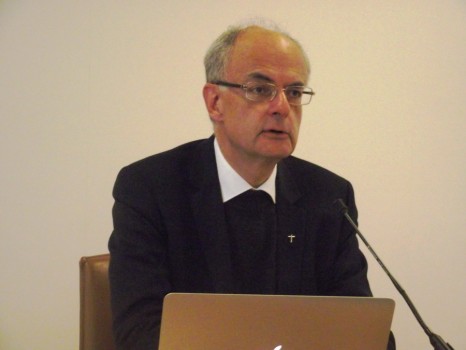 Jean-François Chiron
Jean-François Chiron
Le « sacerdoce » dans le discours catholique avant Vatican II
Le discours catholique sur le sacerdoce ministériel avant Vatican II peut être étudié à partir des textes pontificaux de la première moitié du XXe siècle et d’une lettre pastorale du cardinal Suhard. Ces documents représentent les états ultimes d’une tradition qui fait du prêtre un homme séparé du peuple, médiateur entre Dieu et les hommes, dans une perspective christologique qui finit par définir son sacerdoce comme participation au sacerdoce du Christ. La prise de conscience, dans les décennies précédant le concile, de la nécessité d’un rôle « missionnaire » conduisit à vouloir faire du prêtre, homme séparé, un homme immergé dans le monde qu’il doit évangéliser. Il n’est pas sûr que le recours, alors renforcé, à la thématique de la médiation sacerdotale ait suffi à honorer un programme aussi ambitieux, sinon contradictoire.
‘Priesthood’ in Catholic discourse before Vatican II
Catholic discourse on ministerial priesthood before Vatican II can be studied on the basis of pontifical texts in the first half of the 20th century and a pastoral letter written by Cardinal Suhard. These documents represent the ultimate state of a tradition that made a priest separate from his people, a mediator between God and mankind, in a Christological perspective that ended up defining his priesthood as participation in the priesthood of Christ. Rising awareness in the decades before the Council of the necessity of a ‘missionary’ rôle led to making priests separate men, men immersed in the world they were to evangelize. It is not certain whether reliance, in this case reinforced, on the theme of priestly mediation was sufficient to honor a programme this ambitious, if not contradictory.






Vous souhaitez lire l'article dans son intégralité
Vous êtes abonné à RSR
En préparation
Si vous n'êtes pas abonné à RSR
> abonnez-vous en ligne et téléchargez gratuitement toutes les archives
> ou achetez le numéro concerné pour le recevoir à domicile
> ou téléchargez immédiatement l'article (3 TTC ou gratuit si l'article a plus de 5 ans de parution)